Hello everybody and welcome back to another Timely Review. We're heading off to the year 1999 for the second time on this series. In gaming, the year 1999 was the birthplace of franchises like Ape Escape, Silent Hill, Tony Hawk's Pro Skater, and Super Smash Brothers. Some notable game sequels and spinoffs that were released around this time were Donkey Kong 64, Spyro 2, Crash Team Racing, Gran Turismo 2, Resident Evil 3, Mario Party, and Pokemon Gold and Silver.
That is at least as far as Sony and Nintendo are concerned. Both of them were kings of console gaming at the time, and Nintendo basically had no competition in the handheld market as the Sega Game Gear had already been discontinued at this point. Sega released the Dreamcast worldwide this year as well (after it had already been in Japan for about a year), and while there are pretty great games for the system, it ultimately met a swift and tragic fate in a very short time. After the Sega Saturn was a failure, it was clear that Sega was losing its footing in the triple-threat match that was the console wars of 1990's, and it eventually called it quits entirely in the console market in 2001.
What about PC gaming though, you may ask. In this year, PC gamers were treated to Age of Empires 2, Unreal Tournament 1999, and the subject of today's retrospective, which is one of my favorite video games ever. To this day, it still has a very strong following and community.
Today we're looking at Roller Coaster Tycoon, which was originally released in 1999 on Windows, and had a sequel released in 2002. What you may not know is that the original game also had a board game and a pinball table based off of both built in 2002. Even weirder than that is that the original game also had an Xbox port released in 2003, which is… incredibly bizarre for a game that plays with an on-screen cursor.
An Era of Simulation Games
The 1990s and early 2000s was a great time for simulation or tycoon games on the PC. Sim City was enjoying great success, and eventually spun off into The Sims. Railroad Tycoon, Transport Tycoon, RollerCoaster Tycoon, and Zoo Tycoon would all get their starts in this era. From what I can gather, all of these are remembered quite fondly, and can be linked to more modern business simulation games via a six-degrees-of-separation type of deal. This era is also where isometric graphics would reach its peak relevance as you could find them basically everywhere at this time.
Simulation games are popular because they're both just inherently relaxing and satisfying, which makes them function great as 'comfort games'. RollerCoaster Tycoon is no exception to this. The game has a tranquil atmosphere and a charming pixel-by-pixel graphical style to get you in the mood to build a kickass theme park. Once you see your theme park bustling with happy guests and epic rides, you start to feel like a badass. Spending thousands of dollars on an epic roller coaster and being scored with really great stats once it finishes being tested is one of the most satisfying events in all of video gaming and I dare you to challenge me of that front.
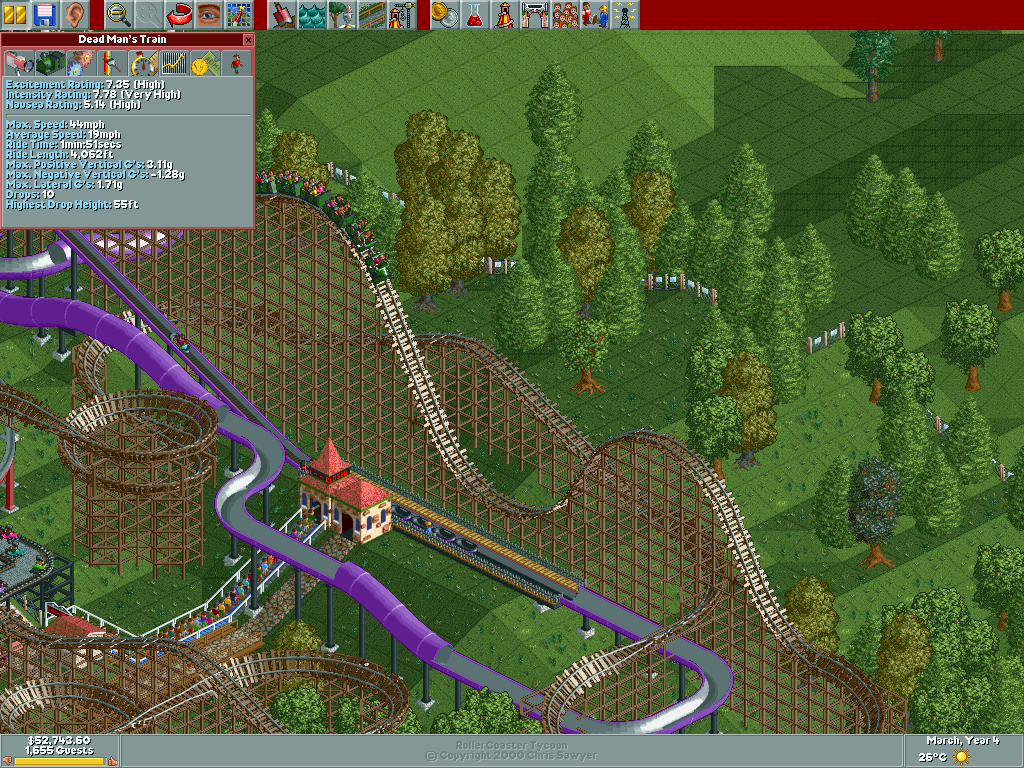
Why the name? The train doesn't... crash, does it? NO! What am I, a savage?
About the Game
What you're seeing on the screen might seem a bit confusing if you haven't played the game before, so let's take this back to humble beginnings.
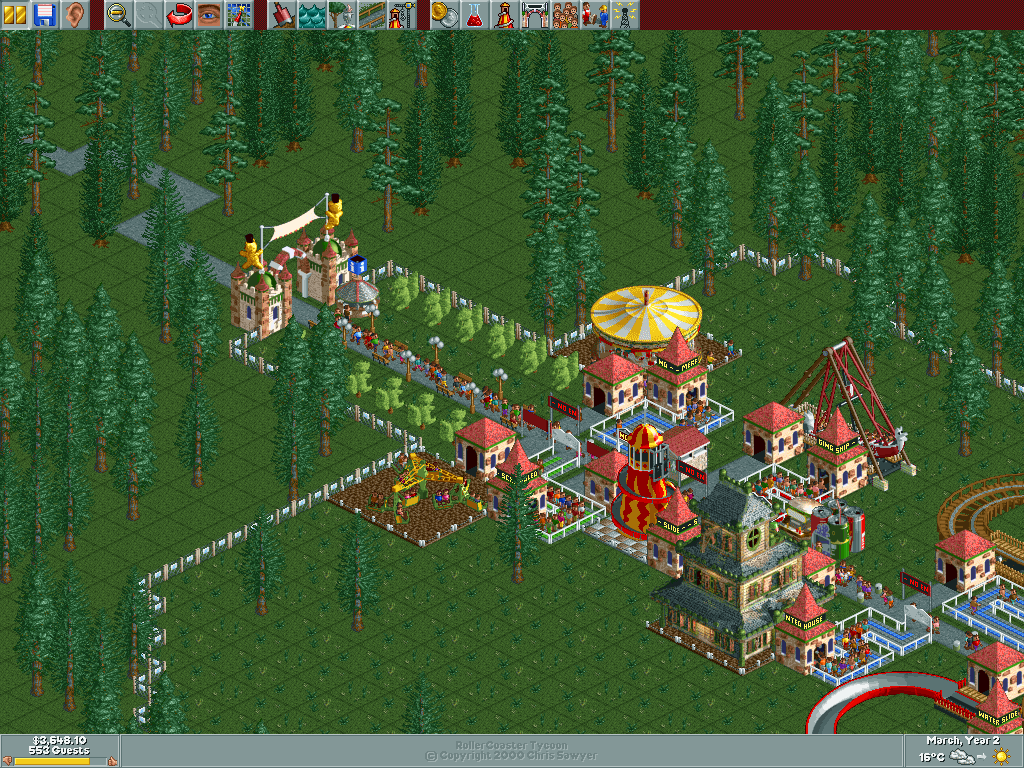
You can already hear the sound of the fairground organ in your ears, can't you?
Despite the name, the game is about much more than just building roller coasters (that's what No Limits is for). Here, you take care of absolutely everything in the park. You'll probably start things off quite simply with some small flat rides like a merry-go-round, a twisting cups ride, and maybe a small kiddie coaster. You'll get to build some giant thrilling coasters later, but you've gotta' start somewhere, right? You'll also have to build some concession stands and restrooms for your guests, and hire some staff to clean up your park and fix some broken rides. I guess as an acronym, RCT has a much better ring to it than something like TPT or APT.
You truly do build everything in the park to your heart's content, or at the very least what your budget will allow you to do. Every used tile in the park, in the screenshot above, is something I placed there myself except for the trees and the first six or so path tiles. You can also do some terraforming to build underground or make some pools of water. After you build a ride, you can also advertise your park, and… well, the point is that you can do so much with the park. All of the buttons on the screen correlate to a function for building or checking on your park and were I to talk about all of them, we'd be here forever. I love talking about what things in my favorite games do, but we've gotta' move on. Hmmm, if only there was a website where people could write and maintain guides for games that they love.
The original game launches with 22 scenarios, all of which take place on a different plot of land, and have an objective to meet like getting a certain number of guests or a certain value of your park. Sometimes they may also have a certain catch or other hidden difficulty which can range from something natural like the terrain being mountainous and uneven (therefore making it harder and more expensive to build on), or something more artificial like not being allowed to remove the trees (looking at you, Rainbow Valley).
22 scenarios may not seem like a lot, but that's where the expansion packs come in. Unless you're very young, you may be inclined to believe that game expansions are a relic of a more modern era of gaming. DLCs and game patches became a standard part of the gaming experience with the seventh console generation which started all the way back in 2005, but the advent of buying expansions for your games have existed since even before then. Two expansion packs, Added Attractions (which was renamed to 'Corkscrew Follies' in the US under the belief that the name change would generate better sales) and Loopy Landscapes released in 1999 and 2000 respectively added 31 and 32 parks, for a total of 85 parks in the first game.
This was later sold as a bundle called 'RollerCoaster Tycoon Deluxe', which contained the original game plus the two expansions and a myriad of user-created designs for rides. Nowadays, virtually all releases of the game have both expansion packs bundled with the base game and is basically the definitive way of playing the first game other than OpenRCT2, but that's an entirely different beast I'll tackle at a later time.
Playing the Game
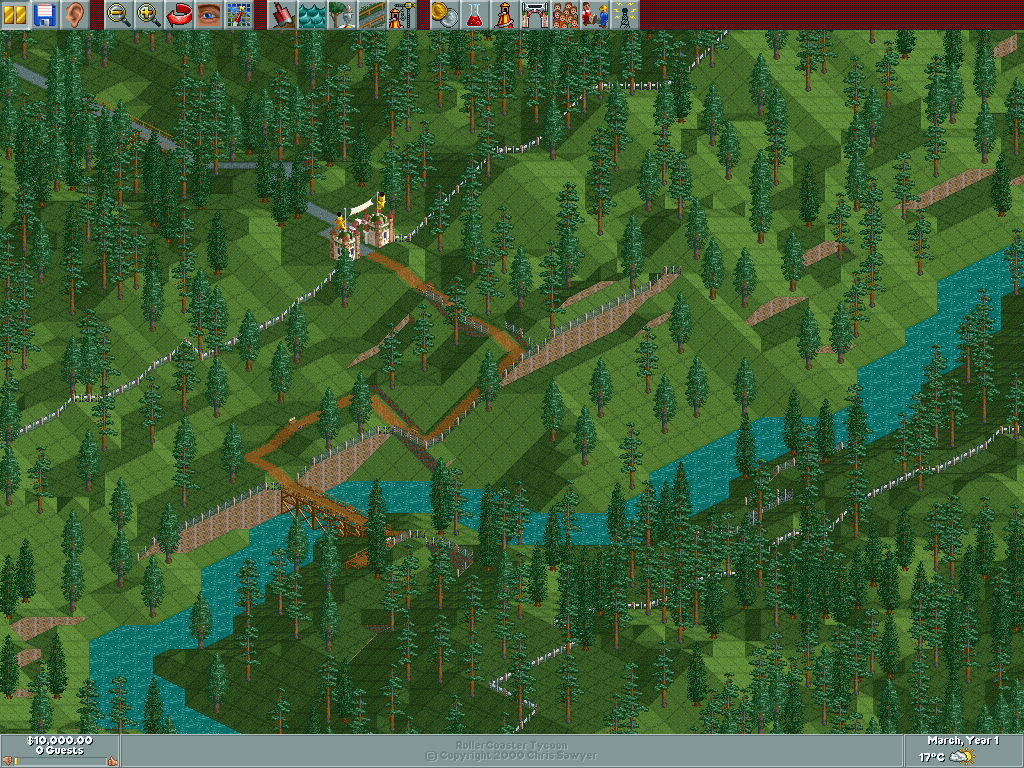
This park sucks. But the environment is quite pretty.
One particular aspect that this game nails absolutely perfectly is in the atmosphere. Some parks put you into a plot of land that hasn't been developed into a theme park, where it's up to you to turn the calming, tranquil atmosphere into a successful theme park. Some scenarios may even start you off in a park that's already developed and fully functioning and it's your job to make them even better. No matter what type of park you're given though, virtually every tile of land is deliberately made the way that it is for you to build around, but you can make your own modifications to the plots of land as well. Even the areas of land on each map where you can't build (because you don't own the land) are given as much attention to detail as the land that you can build on.
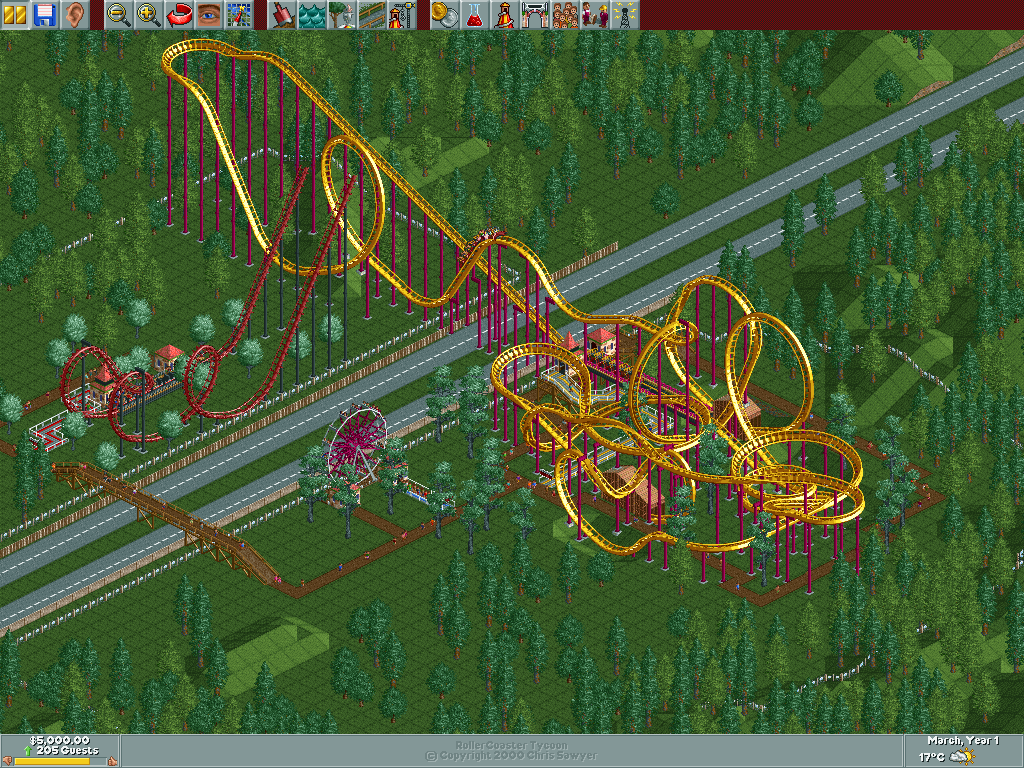
I would really hope that those coaster supports are crash-resistant.
Now that we've examined our plot of land, you've got to ask what type of rides you have available. As I mentioned before, RollerCoaster Tycoon is about much more than just building giant epic roller coasters - it's also about building anything and everything. Right here in Funtopia, we've got a giant, yellow steel coaster which runs across both sides of the highway and makes a lot of loops and twists. But we've also got a small, red "boomerang"-style coaster on the other side and a simple Ferris wheel next to the yellow coaster.
The ride variety in this game is quite good and it only gets better when both expansions are installed. To go along with your gigantic thrill machines, you've got some more down-to-earth rides like a merry-go-round, twisting cups ride, bumper cars, or an enterprise wheel. You can even build into the water with something like a log flume or a dinghy slide. Your coasters come in multiple varieties of small, cheap kiddie coasters, to large wooden coasters, gigantic steel coasters with lots of inversions, to something a little more "funky" like the bobsled coaster. If your park is getting big, then you can even build something like a monorail or a classic train ride to move your guests around quicker.
Every good theme park is made up of more than just its rides though. Your guests are going to (hopefully) spend hours in your park. They'll eventually get hungry or thirsty, so you'll need to build some concession stands along the paths for guests to buy foods or drinks. They may need to go to the bathroom, so you'll need to build some toilet stalls too. You can even sell some balloons and other souvenirs to make some extra money and make your guests a little happier. Build some information kiosks to sell park maps to help guests navigate and some umbrellas which will be useful in parks where it rains a lot. Even in desert parks, where rain is quite rare, the guests will still buy them as a souvenir.
But do you think you can handle managing a theme park all by yourself from the sky? No. You'll need to hire some handymen to clean up the park and mechanics to fix rides when they break down. All the while, you're trying to keep track of your own income, cater to your guests' needs, build new rides, and meet your objective. Throughout the game, you'll be traveling to dense forests, hot deserts, steep mountains, sandy beaches, and it's up to you to make fantastic theme parks out of all of the landscapes available to you.
I Know What We're Going To Do Today!
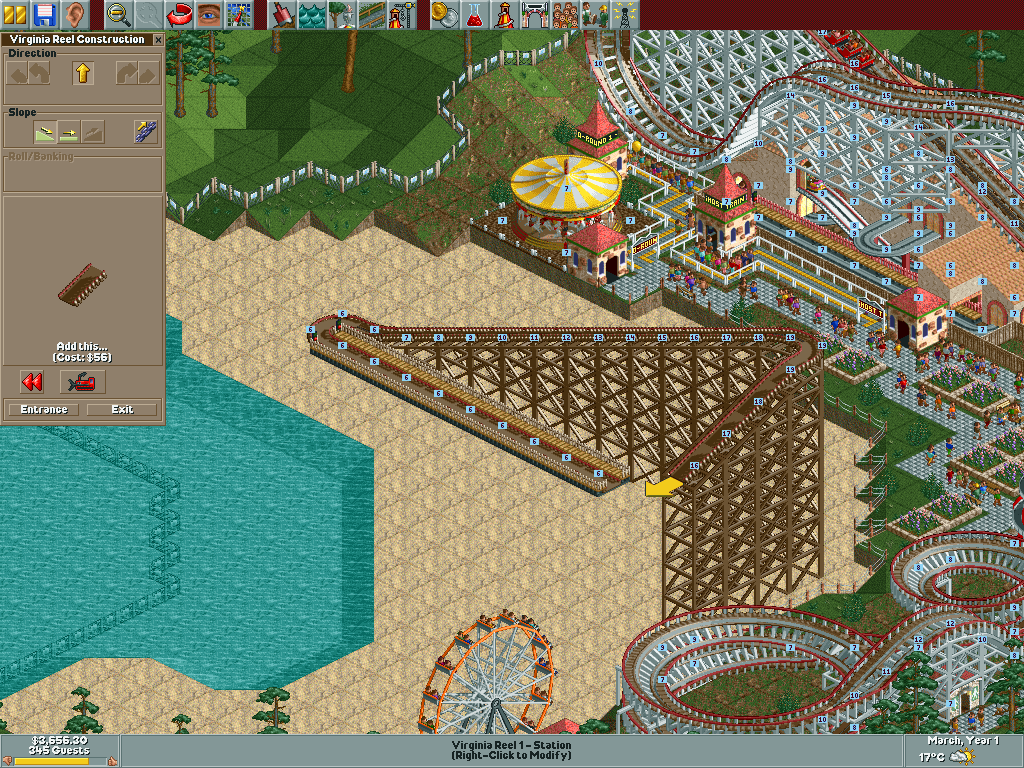
If roller coasters were this cheap to build in real life, we'd see many Phineas and Ferb-like creations in people's backyards.
Let's build a ride! As I mentioned at the start, the game plays on an isometric camera with tile-based geography as was the standard for tycoon games at the time. Naturally, this means that the building system for your paths and rides also operate under this same tile system. Compared to more modern park games like Planet Coaster, this tile-based system is somewhat simpler to build with since all the moving work has already been done for you, while at the same time also more limited since you don't have quite as much precise control over where you want to go. This is a bit primitive by modern standards, but it still works perfectly fine and it's not that much harder to build over-the-top designs. Fine enough to the point where Parkitect adopted this system for themselves in the latter half of the 2010s.
While it's simple to build the rides, it's another thing entirely to visualize how the ride will work as you're building it. Unlike park building games that would be released after it, there's no option in this game to do a "ghost test" of the ride as you're building it, and this is probably the part of the game that has aged the worst in comparison to those later park games. OpenRCT2 would add this as a feature later but in the original unmodded games, you've got to finish the ride before testing it meaning that your only way of telling if a train will move too quickly or too slowly through a specific section of the track is to just "eyeball" it and hope for the best in testing. After a while of understanding the game's physics, you'll learn to work around this, but it still remains a cumbersome process when you're working with huge designs.
The Technological Achievement That This Game Truly Is
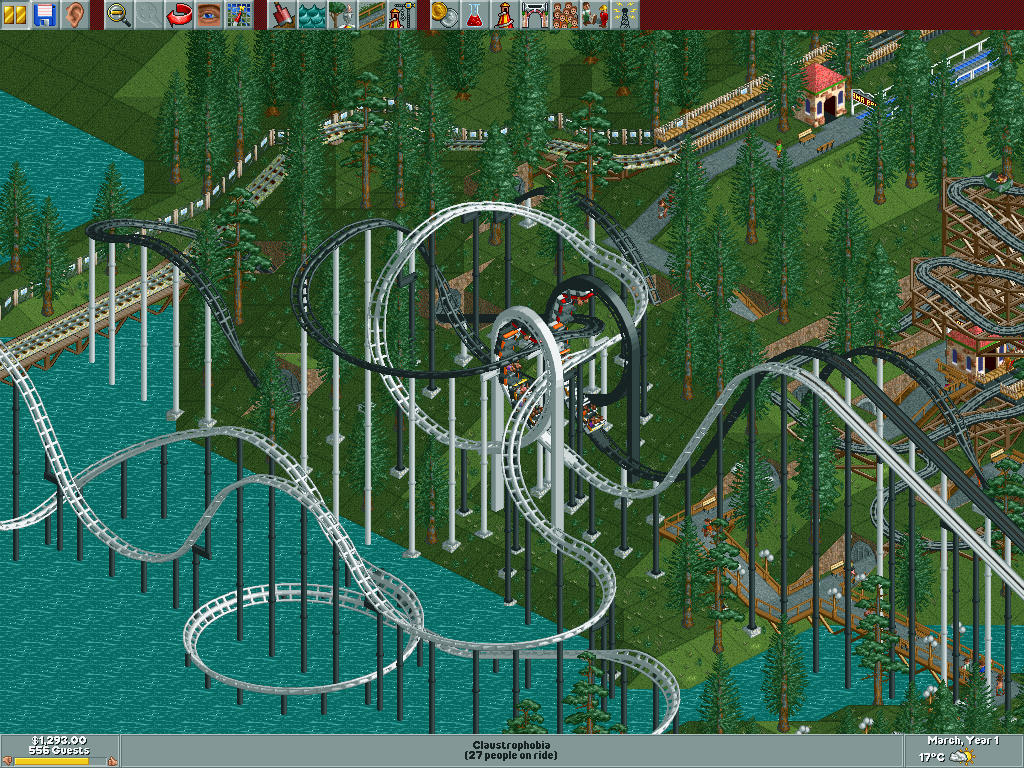
An iconic sight for people who remember this game way back when.
What I have yet to mention though is how much a technological marvel this game is. This game was coded entirely by one person: Chris Sawyer. If you knew just exactly how much coding work went into this game, then you'd know that Chris Sawyer may very well be the smartest human who has ever lived. Just coming off of Transport Tycoon, Chris Sawyer was able to code a working and intuitive roller coaster physics engine, a guest AI capable of independently processing thousands and thousands of guests at the same time, and all of the algorithms used to calculate ride stats… entirely in Assembly and he somehow managed to make it work. You'd need to write a several-hundred page book to talk about how every little coding interaction works within the game. And I know that my amazement doesn't mean much as someone who knows next to nothing about how to code, but it truly blows my mind how Chris ended up making the game that he did.
Players who aren't aware of any of the technological aspects can simply just pick it up and play it. RollerCoaster Tycoon is extremely accessible to people of all ages while also having a very high maximum skill level that you can reach, which makes it simple for little kids to pick up while still leaving plenty for adults to figure out and learn as well.
But as amazing as Chris Sawyer's work is, not enough credits goes to the other two people who contributed pretty significantly to developing this game: Simon Foster and Allister Brimble. Simon Foster is responsible for the graphical design and sprite work of the game, and Allister Brimble is the composer for the game's music and he even made a theme for OpenRCT2. It's just simply amazing how a game that would leave such a huge impact on the gaming industry and continue to find an active community nearly 25 years later was developed pretty much entirely by only 3 people.
RollerCoaster Tycoon's Impact on the Gaming World
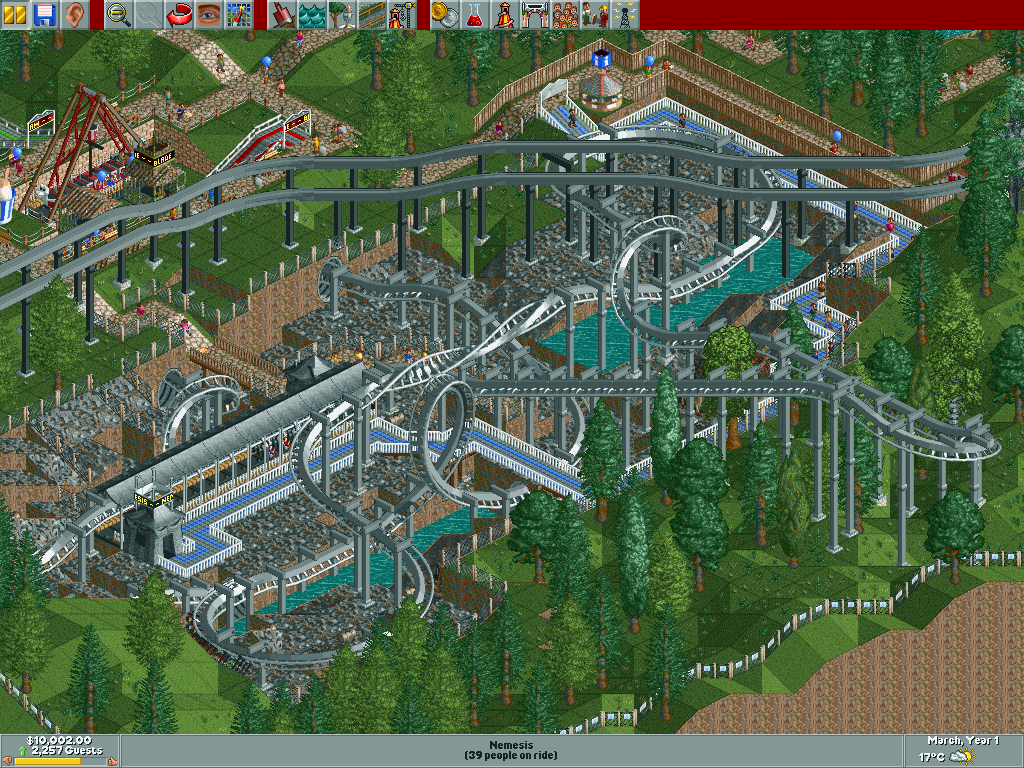
Not just fantasy parks. It even has a few real ones too.
It's no secret that RollerCoaster Tycoon 1 and 2 (and to a lesser extent, also 3) are still remembered to this day and are so fondly regarded in the eyes of gamers everywhere. I think the extent in which this game has made its mark on gaming culture as a whole is much larger than most people realize. Although it isn't the first coaster-building game ever made, RollerCoaster Tycoon single-handedly kickstarted an entire subset of business simulation games. Basically every park building game made after it can be linked back to RollerCoaster Tycoon in one way or another, and I think even simulation games of entirely different types can thank this game in part for propping them up.
The game is simple to play and easy to love thanks to its wonderfully balanced learning curve, charming graphical design, high skill ceiling and freedom to design parks however you want… For the most part. Tons of little things in this game to even just the sound effect that plays when the game gives you a notification at the bottom of the screen just make the experience that much more pleasant.
The game is definitely on the primitive side by today's standards, particularly with the isometric camera perspective, tile-based builder, and very simplistic and sometimes quirky guest AI, but even in the year 2023, the game is still immensely fun and satisfying to play. Thousands of people seem to agree with that sentiment because I still hear people talk about this game to this day and OpenRCT2 still receives updates. Regardless of whether or not you're a fan of tycoon games like this, it's still worth checking out. The complete edition can be bought on Steam, GoG, or Humble* for $5.99 USD, and that's $5.99 for a game that will last you hundreds upon hundreds of hours of playtime and the chance to experience an iconic piece of gaming from this era.
If you already have RCT1, then OpenRCT2 even allows you to play the RCT1 scenarios in that game.
Will I do a Timely Review for the sequel, RollerCoaster Tycoon 2? You can be absolutely sure that I will. Do you have fond memories or RollerCoaster Tycoon, or even still play it today? Were you one of those lucky souls who found this game in a cereal box? Do let me know down in the comments below. If you enjoyed this Timely Review, then you can check out more old game reviews right here.
*Out of Games is a Humble Bundle Partner and may earn a commission for purchases made through links with our affiliate code.
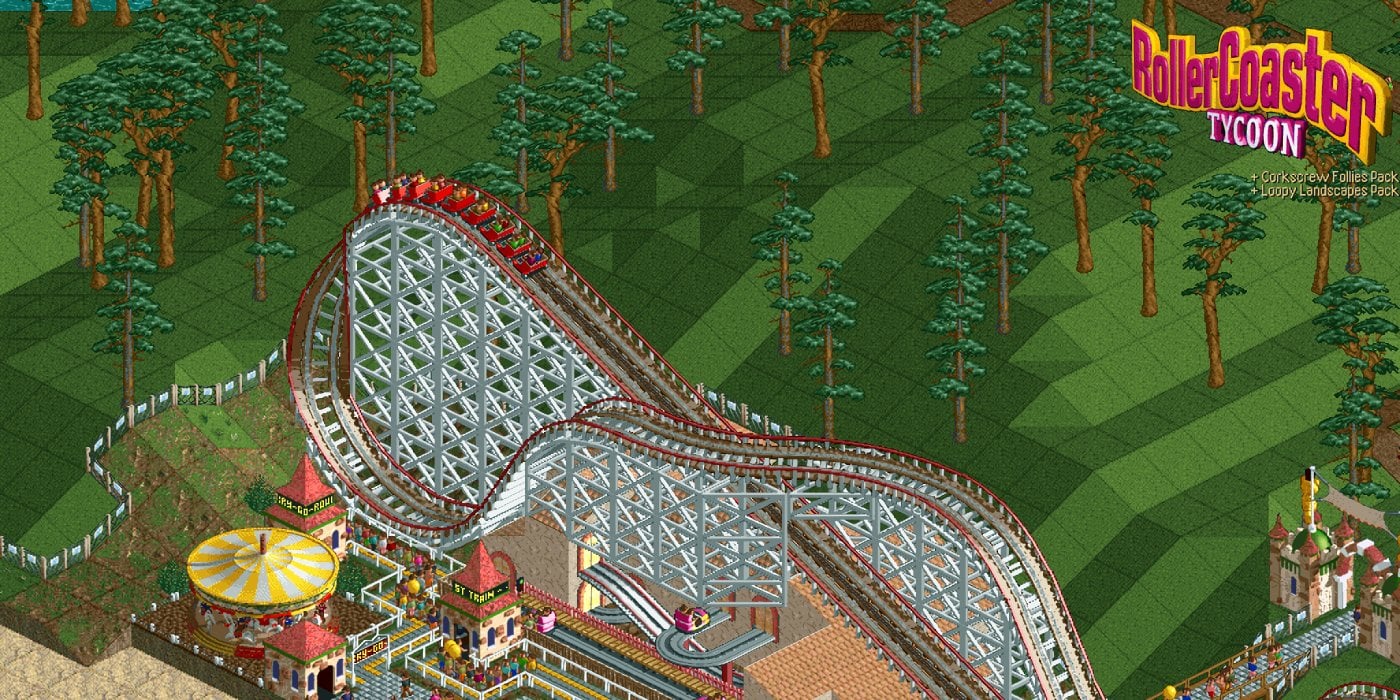
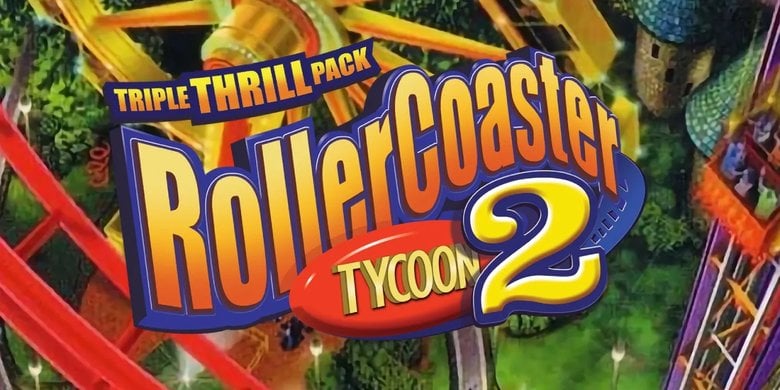
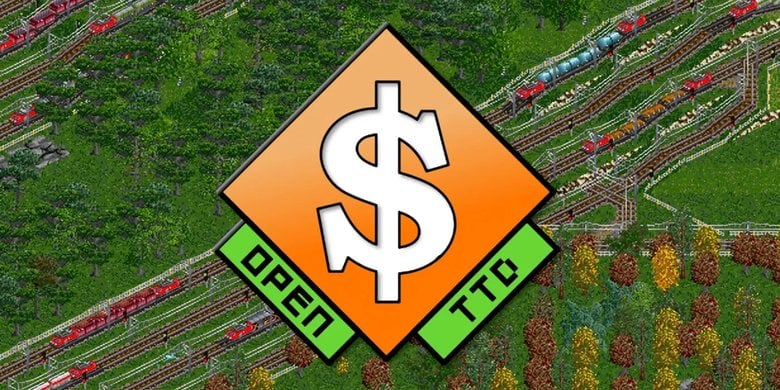
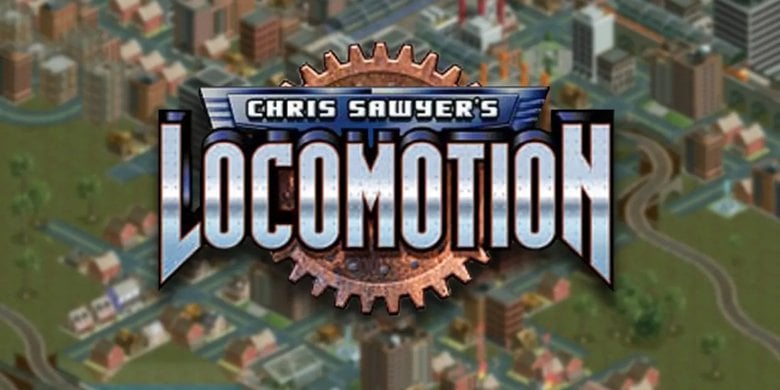
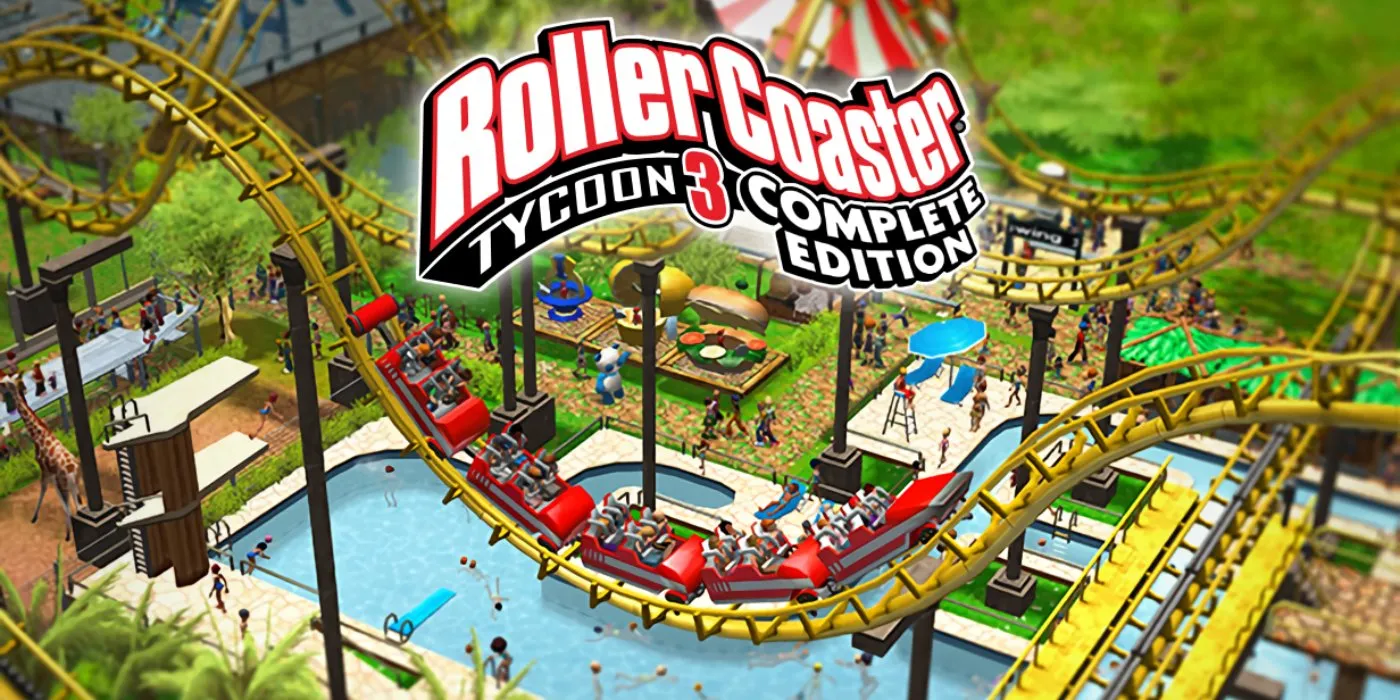
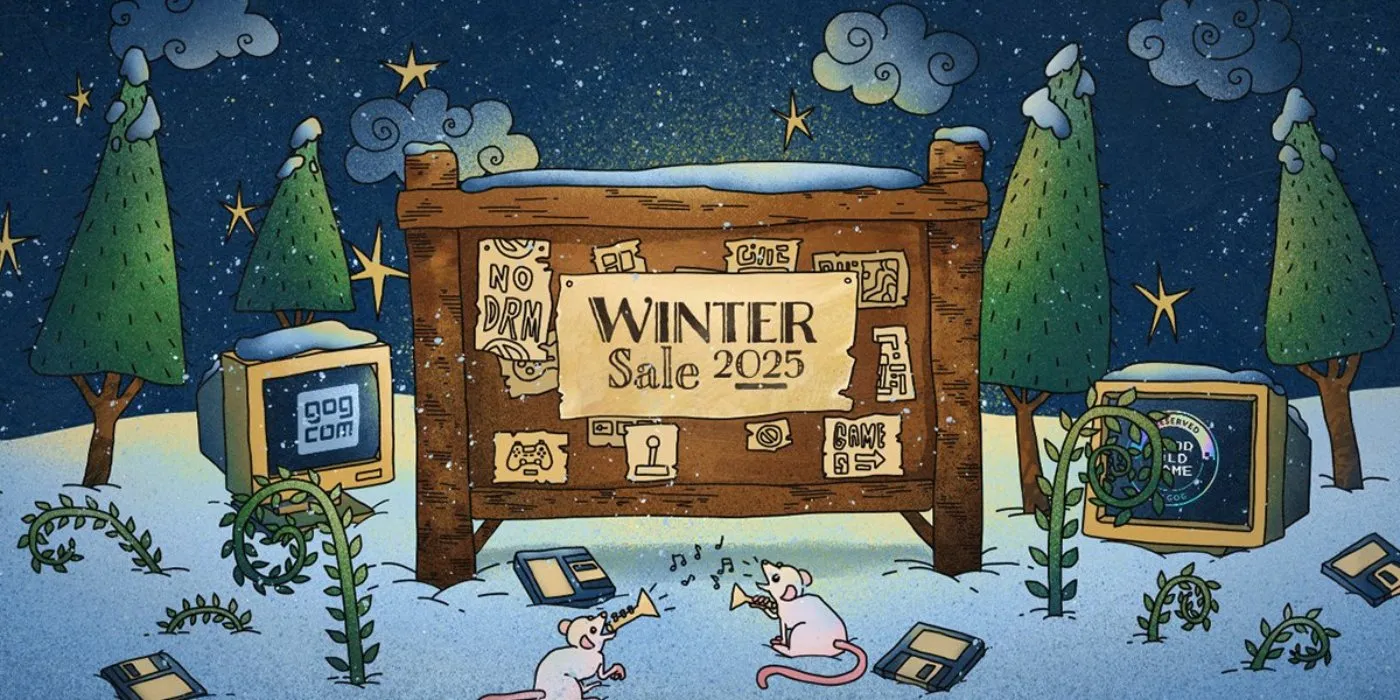
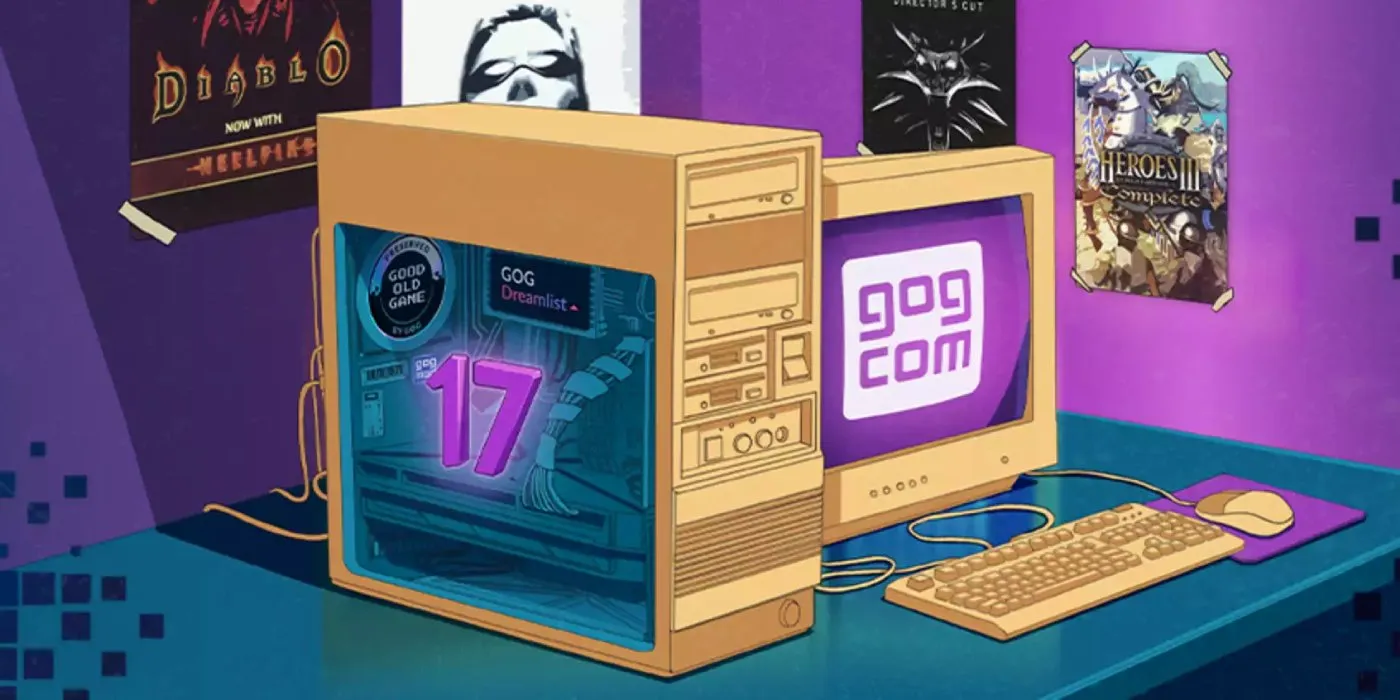
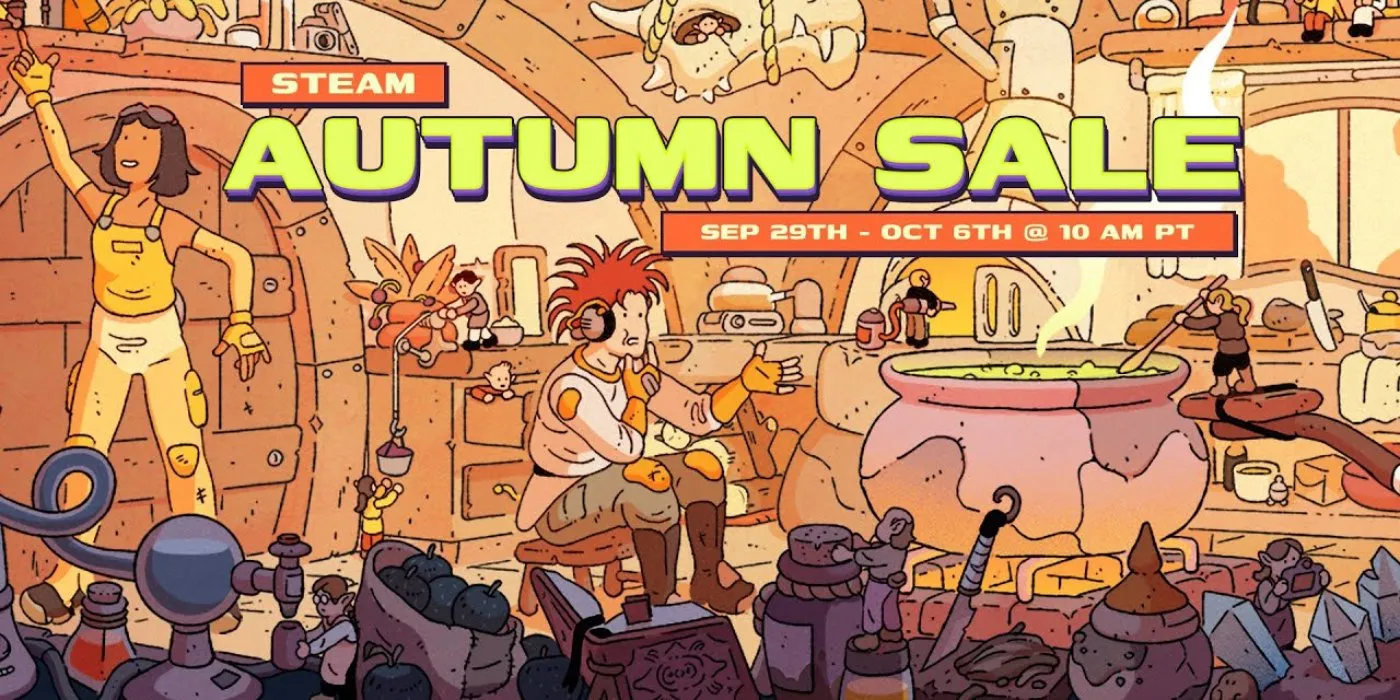
Comments
This was an amazing read! Thanks for all the work you put into it :)
This game really marked my childhood and was just too amazing for its time
Also you mentioned Zoo Tycoon and that made me wonder why is it not on steam. Still hoping for a steam release for it too.
Thank you so much for reading my piece. I'm with you on Zoo Tycoon. Steam absolutely needs to get it and I'm hoping it does at some point.